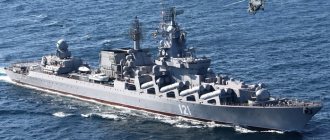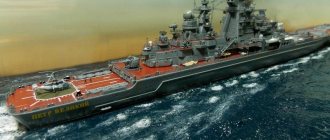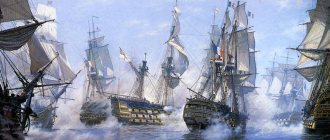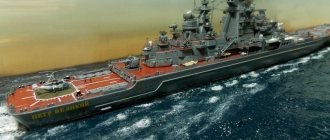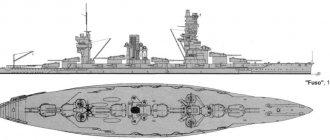Period, the term 'Flagship' means the ship in which the Admiral (or Commodore) flies his flag (or broad pennant). As in the Royal Navy, shore installations may be employed as warships, the term may also refer to shore installations under the responsibility of senior Royal Navy commanders. For example, in 1960, the Commanders-in-Chief of the Home Fleet and its successors, the Western Fleet, and the Commander-in-Chief of the Fleet, flew their flags ashore in HMS Warrior
at Northwood, before moving to three-star Fleet Commander moved to Portsmouth in 2005.
Since then, the fleet commander has flown his flag from this headquarters on the shore. HMS Excellent
.
In addition, the First Sea Lord flies his flag in HMS Victory
(permanently based at the National Museum of the Royal Navy, but is still a warship), which is why she is called the "Flagship of the First Sea Lord".
Fleet flagship
the Royal Navy, the Fleet's Flagship
technically it is a ship that will house a 2* Naval Combat Staff (such as the COMUKMARFOR, a rear admiral who is usually based ashore) for operations, but in practice is considered a warship, recognized as the most prestigious vessel in the fleet.
In the modern era this is usually an aircraft carrier, but this all changed in 2010 with the appointment of HMS Albion
.
The flag was transferred to HMS Bulwark
in 2011 and HMS
Ocean
in June 2015,[1] before returning to HMS
Albion
in 2022.[2]
She will convert to an aircraft carrier when HMS Queen Elizabeth
takes over duties in late 2022/early 2019.[3]
Examples[edit]
Literature[edit]
- Rudazov’s metaverse - there are many flagships here, good and different. What is there not a lot in these books? "Archmage" - "Captain Blood", the flagship of the gray fleet, the personal ship of Asante Storm. Made from faarhi wood, which contains mana in unimaginable quantities - the admiral was so used to always having it at hand (or rather, under his feet) that he had almost forgotten how to simply replenish himself on the go. When this ship disappeared in the explosion of the Fire Mountain, Asante built a new one, exactly the same, but under the name “Admiral Blood”, and under Creole he converted it into a Kotzebue (that is, he taught it to fly).
- “Crew” - “Svyatogor”, the flagship of the space fleet of the Svarog Empire, the largest of all human ships (eight hundred kilometers in length). The emperor himself is listed as the captain of the ship!
- "Trapper" - "Sun Tzu", the flagship of the space fleet of the Solar System.
TV series[edit]
- Star Trek: Discovery - Charon, flagship of the Earth Empire and the emperor's flying palace. A gigantic ship with a spore reactor in the form of a miniature sun in the rim. One salvo of torpedoes can incinerate an entire hemisphere of the planet.
Video games[edit]
- Space Rangers - the game mentions that the Coalition had flagships, but they were mostly destroyed, both before the events of the first part and before the events of the second. In “KR 2:HD Revolution” they still appear and are distinguished by their power.
- Star Wars: Empire at War - if there is an officer in the fleet (this is such a minor hero), then he will board one of the ships of the most powerful class available, thus appointing him as the flagship. Of the named heroes, the flagships are Admiral Ackbar's House One for the rebels and Admiral Piett's improved Star Destroyer for the Imperials. By the way, in the original game, with the appearance of these guys, the secondary characters also transferred to their ships, but in the add-on they are already trying to be placed separately. The add-on also features Grand Admiral Thrawn, whose flagship is painted blue, and the grand Executioner, on which Darth Vader flies. The staff turnover in the latter is terrifying: during the battle you can regularly hear how Ani’s grandfather is strangling the next officer who “failed him for the last time.” And the flagship of the Syndicate fleet is Tiber Zann's battleship "Merciless" - the only battleship capable of traveling across the galaxy unnoticed by enemy defenses.
Flagships of the modern fleet
| Ship | Dates |
| HMS Invincible | 1993–2005 |
| HMS Ark Royal | 2005–2007 |
| HMS Illustrious | 2007–2009 |
| HMS Ark Royal | 2009 - December 13, 2010[4] |
| HMS Albion | December 13, 2010 - October 11, 2011[5] |
| HMS Bulwark | October 11, 2011 - June 1, 2015[6] |
| HMS Ocean | June 1, 2015 – March 27, 2022[7] |
| HMS Albion | March 27, 2022 - present Time[8] |
| HMS Queen Elizabeth | (In the future - date to be confirmed) |
Flagship as a metaphor[edit]
Like many other naval terms, flagship
has passed into common usage where it means the most important or leading member of a group, as in the case of the flagship station of a broadcast network. Used as a noun and adjective to describe the most famous or widely advertised product, brand, location, or service offered by a company. Derivatives include the “flagship brand” or “flagship product” of a manufacturing retail chain or the “flagship service” of a hotel or transportation business.
The term "flagship" can have certain uses:
- Car companies may have a flagship in the form of their flagship or most expensive car.
- Electronics companies may have a series of products that are considered their flagships, usually consisting of one or two products that are updated periodically. For example, the Samsung Galaxy S series consists of several flagship smartphones that are released annually.
- In rail transport, the "flagship service" is either the fastest or the most luxurious. It is often also a named train or service. [ citation needed
]
Colleges and universities in the USA[edit]
In most US states, public university education is provided through one or more university systems, with each system having multiple campuses located throughout the state. The phrase " flagship institution"
or "
flagship university"
may apply to an individual school or campus within each state system. The College Board, for example, defines flagship universities as the most prominent institutions in a state, noting that they tend to be the first to open and are often the largest and most selective, as well as the most research-based, public universities. [1] [2] [3] These schools are often land grant, sea grant, or space grant research universities. [4] According to Robert M. Berdahl, then chancellor of the University of California, Berkeley, the phrase "flagship" originated in the 1950s, when Morrill Act schools were joined by new institutions built in the wake of postwar system expansion state universities. [5]
Berdahl further notes that because flagship schools are typically the oldest schools in the system, they are often the largest and best funded and perceived as elite compared to non-core public schools. [5] He comments: “Those of us who work in higher education 'systems' are often actively discouraged from using the term 'flagship' to refer to our campuses because it is considered offensive to the self-esteem of colleagues at other institutions. our systems. The use of this term is seen by some as elitist and boastful. Many consider it "politically incorrect" in the context of higher education policy. ... Only in safe company of graduates is it permissible to use this term." [5]
However, the term "flagship university" is still used in official contexts by the U.S. Department of Education, various state university governing boards, and state legislatures. [6] [7] [8] [9] [10] In addition, public universities often call themselves flagships. [11] [12] Higher education agencies, research journals, and other organizations also use the term, although their lists of top universities may vary widely. One list of 50 flagship universities (one per state) is used by the Higher Education Coordinating Board,[13] the College Board,[2][3] the Princeton Review[14], and many other state and federal education and government agencies[15] for various purposes, including tuition and rate comparisons, [1] [16] [17] research, [18] [19] [20] [21] and public policy analyses. [22] [23] [24] [25]
Despite its ubiquity, this list of 50 flagships is not the only state-by-state examination of flagships. In a 2010 article, Standard & Poor's compiled its own list of flagship universities, noting that each state typically has one or two institutions with flagship characteristics. [26] Education Sector, an education policy organization, used a different list of 51 flagship universities in an August 2011 study of college debt. In several states, several universities were classified as flagship universities due to "less clear distinction between one flagship and other public universities" in those states. [27] Additionally, several states were not included in the study due to a lack of comparative data. [27] There are many cases where several schools in a state have claimed to be, or have been described as, "flagship" schools. [28] [29] [30] [31] [32] [33] [34] [35] [36]
In February 2012, the Idaho State Board of Education made a controversial decision to strike the word "flagship" from the University of Idaho mission. [37] Board President Richard Westerberg explained that this change was made as part of many changes the Board made to the mission statements of several Idaho universities to ensure consistency and collegiality among all statements rather than comparison or competition. [38]
Retail [edit]
Main articles: Retail format and Specialty store
Tiffany & Co. 's 10-story flagship store on Fifth Avenue in New York
Flagship stores
are flagship stores for brand retailers, larger than their standard outlets and with a large inventory, often found in well-known shopping districts such as Fifth Avenue in New York, Oxford Street in London or Tokyo's Ginza district . [39]
Broadcasting[edit]
Main article: Flagship (broadcast)
A flagship station is the main station in a radio or television broadcast network. This could be the station that produces the most material for the network, or the station in the parent company's home city, or both. The term dates back to the mid-twentieth century of broadcasting, when central stations produced programs for their networks.
For example, the flagship stations of the ABC, NBC, and CBS television and radio networks are owned and operated in New York City. In addition, public television's WNET served as the flagship member station for National Educational Television (NET), the precursor to the US Public Broadcasting Service (PBS).
In sports broadcasting, a "flagship" is a team's primary station in its home market that produces game broadcasts and transmits them to its partners. For example, WGN was the flagship station of the Chicago Cubs baseball team, which has an extensive Cubs radio network spanning several states.
Cars[edit]
Contrast the automotive concept of flagship models with halo models; see Halo effect#Marketing
The term "flagship" is also used to describe an automaker's top-of-the-line (i.e., largest/most expensive/most prestigious) vehicle. Modern examples include the Mercedes-Benz S-Class, Toyota Century, Hongqi L5 and Land Rover's Range Rover.
Airlines [edit]
American Airlines received a copyright for the term "flagship" on May 3, 1937, according to the Copyright Records Catalog .
[40] As of December 20, 2022, as stated in the legal document, this includes “the Flagship, Flagship Lounge, and Flagship Suite marks (the “Flagship Marks”) to describe first-class air travel services. and business class passengers since the 1930s and 1940s." [41] [42] Delta Airlines also uses/has used the word "Flagship" to describe its top positions, as pointed out by AA and was legally challenged in December 2022 and in 2022. [43]
Saving [edit]
Within conservation biology, the term flagship species refers to a species or taxon that is a symbol or rallying point for enhancing conservation efforts. [44]
The only aircraft carrier on the Black Sea
The predecessors of the Admiral Kuznetsov - the heavy aircraft-carrying cruisers of the Krechet project (or the Kiev class, as they are called in NATO by the name of the lead ship) - had quite powerful conventional weapons: anti-aircraft missile and artillery systems, torpedo tubes, depth charges and etc. The new cruiser was armed even more powerfully, giving it a dozen launchers of heavy Granit anti-ship missiles. Thus, it immediately ceased to be considered an aircraft carrier, since they are distinguished by the lack of their own offensive weapons other than aircraft. Due to this, “Admiral Kuznetsov” was and remains the only aircraft-carrying ship that is allowed to appear in the Black Sea. All other aircraft carriers are prohibited from entering there in accordance with the Montreux Convention adopted back in 1936, which also determines what types of ships can pass through the Bosporus and Dardanelles straits.
Five names of one cruiser
“Admiral Kuznetsov” can perhaps be called a record holder for the number of names that this ship changed before it entered service. In the project he bore the name “Soviet Union”. It was no coincidence that the ship received such an honor: it was supposed to become the first Soviet aircraft carrier! But when on September 1, 1982, a new heavy aircraft-carrying cruiser was laid down at the Nikolaev plant, it was given the name “Riga”, since, according to tradition, Soviet aircraft-carrying ships were named after the capitals of the union republics. A little over two months later, Soviet leader Leonid Brezhnev died, and on February 22, 1983, the ship was re-laid with a new name - in honor of the deceased General Secretary. As the Leonid Brezhnev cruiser, it was launched on December 4, 1985. Two years later, in the wake of perestroika, it was renamed “Tbilisi”. And on October 4, 1990, he received his fifth and final name, which he bears to this day: “Admiral of the Fleet of the Soviet Union Kuznetsov,” in honor of the legendary Nikolai Kuznetsov, the first of the Soviet naval commanders to speak out for the construction of his own aircraft carriers.
Links[edit]
- ^ ab "Publication" (PDF). www.nsf.gov
. 2012 - ^a b "Tuition and fees at top universities over time - trends in higher education". trends.collegeboard.org
. - ^ ab "2014-15 Tuition and Fees at Top Universities and Five-Year Percentage Change". trends.collegeboard.org
. Archived from the original on 2015-10-17. - "Leading Universities Must Commit to Excellence and Access". University of Virginia. Archived from the original on 2012-10-01. Retrieved March 13, 2013.
- ^ abc Berdahl, Robert (1998-10-08). "The Future of Flagship Universities". University of California at Berkeley. Archived from the original on 2011-05-11. Retrieved September 22, 2006.
- "U.S. Department of Education". ed.gov. Retrieved April 2, 2013.
- "Toolkit" (PDF). www.ed.gov
. - "Archive copy" (PDF). Archived from the original (PDF) on May 25, 2013. Retrieved March 25, 2013. CS1 maint: archived copy as title (link)
- "Journal" (PDF). www.ilga.gov
. - "Archive copy" (PDF). Archived from the original (PDF) on 05/08/2013. Retrieved March 25, 2013. CS1 maint: archived copy as title (link)
- David K. Scott (2001). “Strategic Actions FY'97 - FY'01 III. Looking to the Future: Redefining the Dream". University of Massachusetts Amherst, Office of the Chancellor. Retrieved September 22, 2006.
- Dr. CD Mote, Jr., President, University of Maryland, College Park (2006). "Testimony to the General Assembly of Maryland". Archived from the original on 2006-09-01. Retrieved September 22, 2006.CS1 maint: multiple names: authors list (link)
- "Final Report" (PDF). www.wsac.wa.gov
. 2009 - Eric Owens, Esq.; Review, Princeton (2004-03-01). America's Best Colleges. Princeton Review. ISBN 9780375763731.
- "Archive copy" (PDF). Archived from the original (PDF) on April 10, 2015. Retrieved April 8, 2015. CS1 maint: archived copy as title (link)
- [1] Archived November 7, 2007, at the Wayback Machine.
- "Infi" (PDF). www.wsac.wa.gov
. - "Archive copy" (PDF). Archived from the original (PDF) on May 2, 2013. Retrieved April 13, 2013. CS1 maint: archived copy as title (link)
- “Which public university graduates earn the most?” . 2013-03-12. Retrieved September 21, 2014.
- "Drivers of Inequality: Declining Equity at the Nation's Top Public Universities* - Education Foundation" (PDF).
- "SCUP OpenID Server" (PDF). Retrieved September 21, 2014.
- "Archive copy" (PDF). Archived from the original (PDF) on 07/06/2011. Retrieved April 13, 2013. CS1 maint: archived copy as title (link)
- Slater, Robert (1996). "The First Black Graduates of the Nation's Top 50 Public Universities." Journal of Blacks in Higher Education
(13): 72–85. DOI: 10.2307/2963173. JSTOR 2963173. - Gerald, Danette S (2007). Examining the status of undergraduate admissions equity for Black, Hispanic, and low-income students at public four-year universities and flagship campuses. ISBN 9780549453512.
- "Archive copy" (PDF). Archived from the original (PDF) on March 04, 2016. Retrieved April 8, 2015. CS1 maint: archived copy as title (link)
- "University Data" (PDF). img.en25.com
. - ^ ab "Archive copy" (PDF). Archived from the original (PDF) on June 16, 2013. Retrieved April 13, 2013. CS1 maint: archived copy as title (link)
- "Florida". Archived from the original on May 23, 2006. Retrieved March 24, 2013.CS1 maint: Inappropriate URL (link)
- "Today in Tallahassee: Top Universities Commit to Reform".
- "It's Logical to Make UH Our Next Flagship University". www2.egr.uh.edu
. - "Texas A&M University Facts - College Station". Texas A&M University. Archived from the original on 2011-09-18.
- "The Race to Admission: A Tale of Two Leading Universities".
- "Michigan". Archived from the original on 2006-09-09. Retrieved March 24, 2013.
- "NY" . Archived from the original on 2013-07-31.
- "USATODAY.com - USA TODAY 2006 Study of College Tuition and Fees". usatoday30.usatoday.com
. - "Standing Out from the Crowd". March 15, 2012
- "The University of Idaho is no longer a 'flagship' state."
- Idaho Archived April 11, 2013 at Archive.today
- "Flagship Store". about.com. Retrieved March 13, 2013.
- Catalog of copyright records. Part 1. [B] Group 2. Brochures, etc. New series. 1938
- "American Airlines Inc v. Delta Air Lines Inc". www.bloomberglaw.com
. Retrieved January 1, 2022. - "American Airlines". www.americanairlinesnavigator.com
. Retrieved January 1, 2022. - “Airlines are fighting over the FLAGSHIP trademark. AMERICAN v. DELTA - uspatentlaw.cn". Retrieved January 1, 2022.
- Maan Barua (2011). "Mobilizing Metaphors: Popular Uses of Core, Flagship, and Umbrella Species Concepts." Biodiversity and Conservation
.
20
(7): 1427–1440. DOI: 10.1007/s10531-011-0035-у. S2CID 11030284.
First landing
Since the Admiral Kuznetsov was planned from the very beginning as a traditional aircraft carrier, the development of landing techniques on it began even before the ship entered service. For this purpose, near the city of Saki in Crimea, they created the Ground Test Simulator for Naval Aviation - NITKA, where future pilots of the naval wing trained. To ensure that the cruiser was ready to receive conventional aircraft, it was taken to sea for flight testing before construction was completed, on October 21, 1989. Eleven days later, on November 1, for the first time in Russian history, test pilot Viktor Pugachev (after whom one of the most difficult aerobatic maneuvers, the “Pugachev Cobra”, is named) landed a Su-27K fighter with horizontal takeoff and landing on the deck of a ship. On the same day, pilot Toktar Aubakirov took off from a ship deck for the first time in history on a MiG-29K aircraft. And on November 21, Pugachev made his first night landing on the deck of the future Admiral Kuznetsov.
